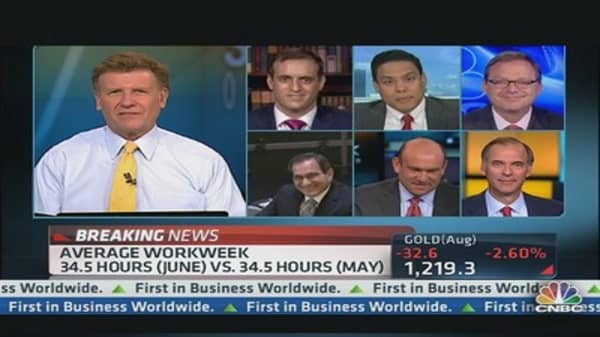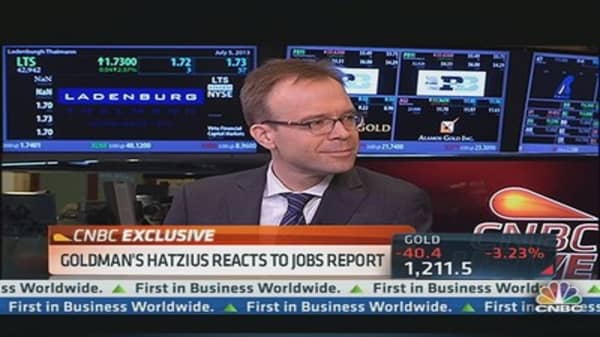The numbers provided a mixed bag of news: While the actual employment level grew by 160,000, the unemployment ranks increased as well, by 17,000.
Those working part-time for economic reasons also jumped, growing 322,000 for the month.
That pushed a more encompassing count of unemployment that includes discouraged and underemployed from 13.8 percent to 14.3 percent.
Moreover, the quality of jobs was weak.
The bulk of the gains—75,000—came in the hospitality industry of bartending and waiters.
Professional and business services was the second-best growth area, adding 53,000 and retail grew 37,000.
Manufacturing jobs posted a decline of 6,000 for the month.
"It's so hard. Unless you know somebody you can't get a job," said Sharon MacGregor, 43, of Patterson, N.J.
MacGregor was laid off a year ago from her job at a medical education company and has struggled since to find a job that can help her make ends meet.
"Now that I've been unemployed for more than six months, I don't feel like I'm even being considered," she said. "Pay is so low. I know we're not supposed to be choosy, but you have to live."
The average duration of unemployment actually fell in June but remained elevated at 35.6 weeks.
While the numbers provided confirmation that employment gains continued pretty much apace with the past year or so, the Fed's targeted growth level remains elusive. The central bank has pegged a 6.5 percent unemployment rate and 2.5 percent inflation as benchmarks to hit before it will start raising its target funds rate.
"We can expect the Fed to continue providing hints of tapering, while maintaining status quo with the current QE program," said Todd Schoenberger, managing partner at LandColt Capital. "Overall, this report is remarkably bullish for stocks."
Stock market investors had been eagerly awaiting the number not only for indications of labor market strength but also as a gauge for when the central bank's historically extreme easing policy might start to wane.
With earnings and economic growth modest, the market has relied on the Fed's liquidity injections to continue a rally that has seen the S&P 500 gain more than 13 percent in 2013.
June did see a marked increase in wages, with hourly earnings rising 10 cents to $24.01, while the average work week was unchanged at 34.5 hours.
(Get the government's nonfarm payrolls report here.)
_ By CNBC's Jeff Cox. Follow him @JeffCoxCNBCcom on Twitter.






